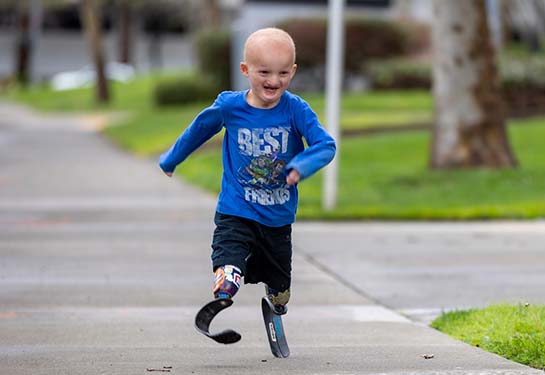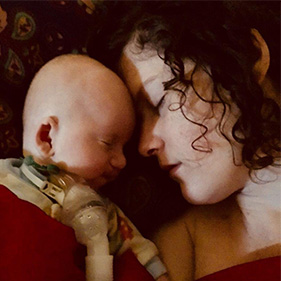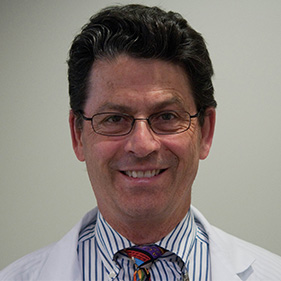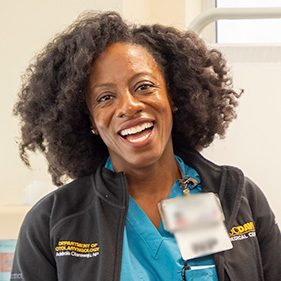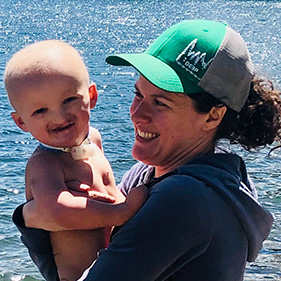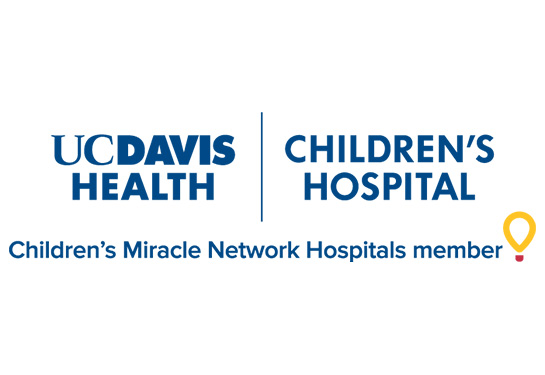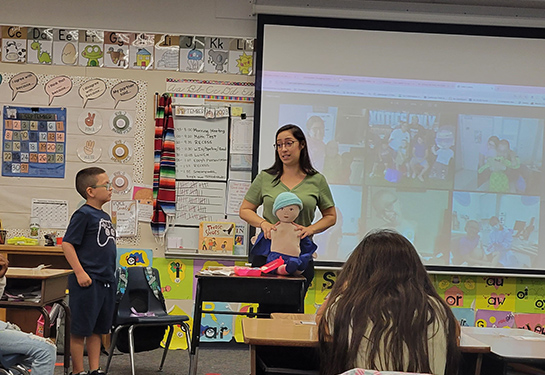‘Nothing holds him back’: Child born with 2 very rare conditions gets lifesaving care
17 surgeries later, 6-year-old boy runs on prosthetic legs and Paralympic dreams
Jamie Duby was six months pregnant in July 2017 when she “met” her developing baby in a dream.
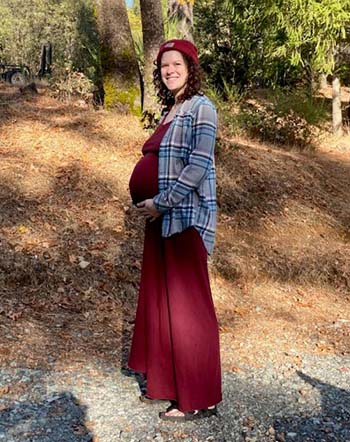
“He was teeny tiny, had one finger on each hand and I was calling him Shine,” recalled Duby. “I contacted my midwife the next morning, panicked. She reassured me that all my stats were good and that fear dreams were common in pregnancy.”
Fast forward to Sept. 16, 2017: Duby’s son arrived five weeks early, weighing just 4.5 pounds. But his early delivery and low birthweight were not the only surprises. The baby, just like in the dream, had one finger on each hand and other complications, too. She named him Shine.
“It was a huge shock. We had no idea he was going to be born this way,” said Duby, who gave birth at a local hospital near her home in El Dorado County. “He was rushed by ambulance to UC Davis Children’s Hospital within hours of being born.”
A daunting diagnosis
UC Davis doctors noticed that Shine’s jaws and eyes couldn’t open, his knees wouldn’t extend completely, and his fingers and toes were joined together, so they called for a genetics consultation.
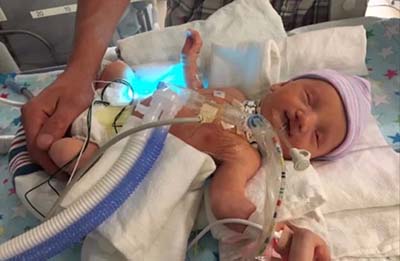
“Given his overall clinical appearance, a diagnosis of Popliteal Pterygium Syndrome (PPS) Bartsocas-Papas type was made,” said Suma Shankar, chief of genomic medicine at the UC Davis MIND Institute and in the Department of Pediatrics. “This is a rare condition caused by alterations in the RIPK4 gene.”
Children with Popliteal Pterygium Syndrome may have webbing or fusion of the fingers or toes and tissue connecting the upper and lower eyelids or the upper and lower jaws. They may also have a cleft palate and webs of skin on the backs of the legs across the knee joint.
The syndrome occurs in approximately 1 in 300,000 births. Bartsocas-Papas is one of many clinically and genetically different variants of the condition.
It was very overwhelming because we weren’t sure what to expect. But we had the support of the care team at UC Davis all along. Without them, I don’t know where we would be.”—Jamie Duby, Shine’s mom
“It was very overwhelming because we weren't sure what to expect," said Duby, speaking of herself and Shine's dad, Adam Arslanian. ‘’But we had the support of the care team at UC Davis all along. Without them, I don’t know where we would be. They really helped us get through that time.”
Nurse practitioner Adebola Olarewaju fondly recalls meeting the family.
“I first met Shine when he was a newborn in the NICU," Olarewaju said. “Since his syndrome was not prenatally diagnosed, there wasn’t much time after Shine was born before medical decisions needed to be made.”
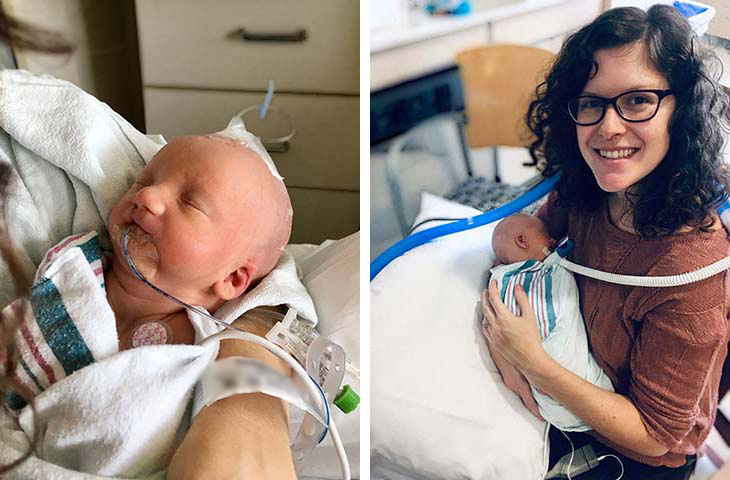
Pediatric otolaryngologist Craig Senders was on Shine’s surgery team for many ear, nose and throat procedures, including a tracheotomy, g-tube for nutrition and operations to repair his palate.
“This is one of those great examples of how advances in medicine and an expert team can change a child’s life,” Senders said. “All our specialists, from cleft and craniofacial surgery, to genetics, to hearing and speech, came together to customize care based on what Shine needed. Through all these procedures, he did amazingly well.”
So well, in fact, that Shine left the hospital in just 21 days — instead of the six months his parents were originally expecting. But he had a long journey ahead, which would include another surprise: a complicated disorder known as ectodermal dysplasia (ED) that affects fewer than 200,000 people.
All our specialists, from cleft and craniofacial surgery, to genetics, to hearing and speech, came together to customize care based on what Shine needed.” —Craig Senders, pediatric otolaryngologist
More surprises
EDs are rare conditions that prompt abnormal development of the skin, sweat glands, hair, teeth and nails and sometimes result in a cleft palate. EDs can also cause problems with the immune system, as well as hearing and vision. They are caused by a change, or mutation, in a gene.
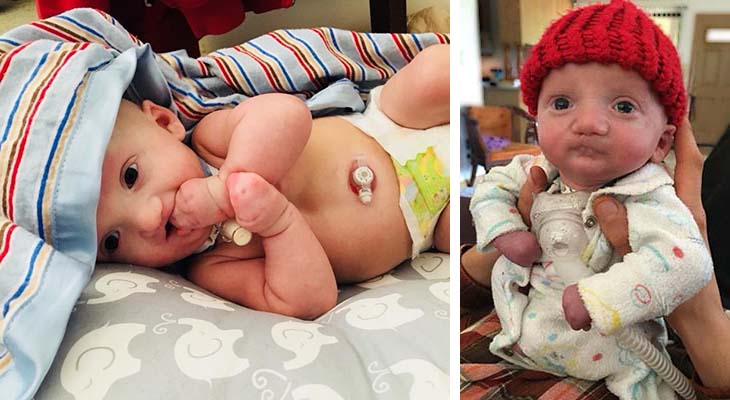
Shine needed more surgeries over the next three years, the most profound being the amputation of his legs above the knee at 2 years old.
“Our choice was he could be in a wheelchair for the rest of his life, or we could amputate and he could run and jump, play and do everything most other kids could do,” Duby said.
Amputation quickly proved to be the best choice.
“As soon as his legs healed after that surgery and he was fitted for his prosthetics, he took off the moment he put them on,” Duby said.
Shine shines
Three years have passed and Shine, now 6 years old, hasn’t stopped running full speed ahead as his 3-year-old sister, Willow, tries to keep up.
His mother knew that he was a special gift. I remember her telling me that she was excited to get him into activities. Mom didn’t want him limited based on his perceived disabilities.” —Adebola Olarewaju, nurse practitioner
“Shine has adapted really well to everything,” Senders said. “He’s always happy. In fact, he’s one of the happiest kids I’ve ever seen. He just runs around content with life.”
Olarewaju is touched by Duby’s hopeful attitude.
“His mother knew that he was a special gift,” Olarewaju said. “I remember her telling me that she was excited to get him into activities. Mom didn’t want him limited based on his perceived disabilities.”

Shine is so active, Duby said, that he has already been through six or seven pairs of legs.
“He just got his first pair of running blades last year and continues to say, ‘Mom. I want to run. I want to run.’ He asks me to time him running down the driveway so he can try to beat his previous time.”
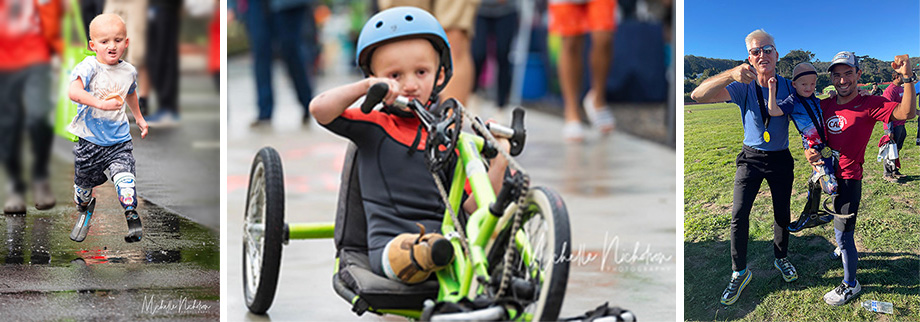
And run he has! Shine has already taken part in six 5Ks and three mini triathlons. He has also gained support and mentorship from a fellow popliteal pterygium Paralympic swimmer, Rudy Garcia-Tolson. In addition, Shine has fenced with Team USA Para fencing coach Brandon Smith and surfed with Team USA coaches.
“Shine told me, ‘Mom. I’m going to go to the Paralympics,’” Duby said. “He wants to be a triathlete, so he trains every day, including running over a mile home from the bus stop while I follow in the car with his sister. Totally his own motivation. It’s his idea.”
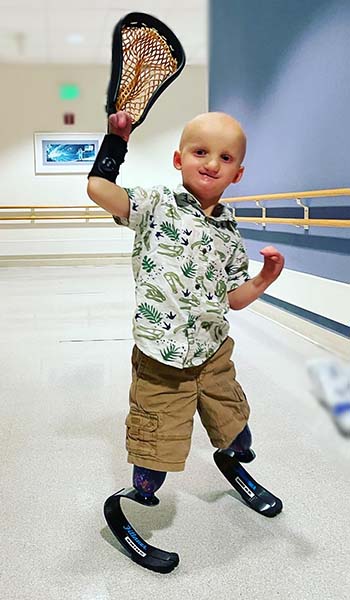
It was also his idea to stand up in front of his kindergarten class earlier this school year and answer kids’ curiosities so they could better understand his condition.
“Shine came home and said kids were staring at him. He asked if he could pick out a couple books for the teacher to read and then talk to the kids about it,” Duby said. “He even took off his legs and passed them around the classroom so everyone could see. He did that all by himself. He’s a really amazing 6 year old.”
Shine takes on the world, one day at a time
Shine also plays T-ball using a lacrosse head to catch and throw. He loves gymnastics, including performing back and front flips. He’s also a talented breakdancer who favors the “spinny moves.”
After 17 surgeries — 14 of them at UC Davis Children’s Surgery Center — Shine has become a familiar face at UC Davis Children’s Hospital. It’s a face his care team is excited to see.

“He came to visit and it was hard to really see him since he was running circles around everyone and everything,” said UC Davis clinical nurse specialist Christa Mu. “His incredible mom, Jamie, had to take up running again just to keep up with this whirlwind of a kiddo!”
Shankar describes Shine as a special child she will never forget.
“Shine is a ‘miracle baby’ who beat all the odds and his story is living proof of the survivability of individuals with PPS, Bartsocas-Papas type,” Shankar said. “He’s a ‘shining’ example of resilience in the face of adversity.”
We love UC Davis. They feel like family to us. Shine wouldn’t be where he is without this team. Right from the beginning everyone supported him and always made us feel like he was really cared for.”—Jamie Duby, Shine’s mom
The admiration is mutual.
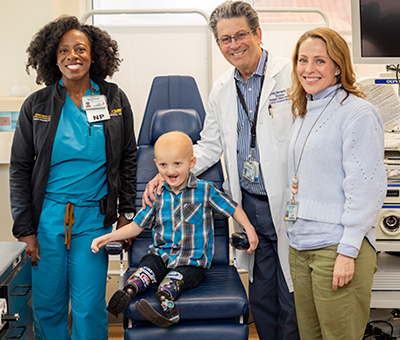
“We love UC Davis. They feel like family to us,” Duby said. “Shine wouldn’t be where he is without this team. Right from the beginning everyone supported him and always made us feel like he was really cared for.”
Although it has been a long road, including a recent diagnosis of hearing loss, Duby takes it all in stride. She takes her cues from her son, who she says is a beacon of hope and happiness.
“I wouldn’t change him for the world. I know in my heart that he was supposed to be born this way,” Duby said, recalling the dream she had while pregnant. “I see firsthand how he is inspiring everyone around him. Nothing holds him back.”

